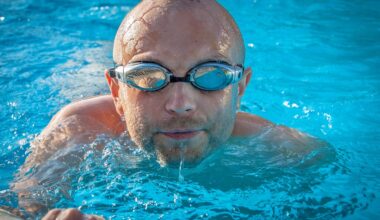The Effects of Exercise on Blood Levels of Psychiatric Medications: A Focus on Lithium
Exercise is known to create significant physiological changes in the body, leading to various beneficial effects. One area of interest is how physical activity alters levels of psychiatric medications, specifically lithium, commonly prescribed for bipolar disorders. Lithium is crucial for mood stabilization, but it can pose risks if blood levels become too low or high. Regular exercise may impact how lithium is absorbed, distributed, and eliminated from the body. Studies suggest that exercise might influence renal function, consequently affecting lithium clearance. Thus, understanding these relationships is essential for optimizing the therapeutic effects of lithium. Moreover, many individuals with mental health disorders benefit from exercise, leading some to wonder about the interplay between these activities and their pharmacological treatments. Exercise can enhance mood and alleviate symptoms of anxiety and depression, making it a vital component of treatment strategies. This dual benefit emphasizes the need for thorough research in this area, potentially guiding practitioners in developing comprehensive fitness and medication plans for patients undergoing psychiatric treatment. This leads to the question: how exactly does exercise impact lithium levels in the blood?
Several studies indicate that physical exercise may have a direct effect on lithium pharmacokinetics. For instance, a key factor in this relationship is the influence of hydration status, which can significantly affect lithium concentrations. Exercise often induces sweating, which can lead to dehydration if fluid intake isn’t properly managed. This dehydration might result in decreased renal clearance of lithium, causing levels to rise, thereby increasing the risk of toxicity. Conversely, adequate hydration during exercise may help maintain more stable lithium levels, reducing fluctuation in its blood concentration. Furthermore, it’s essential to understand that individual responses to exercise and medications can vary widely based on various factors, including age, gender, and diet. These personal considerations necessitate customized exercise regimens and monitoring protocols for patients receiving lithium therapy. Mental health professionals should collaborate with fitness trainers to optimize exercise programs that align with individual medication management plans. That involves close supervision and communication among healthcare providers. Clinicians should encourage patients to maintain regular follow-ups to assess how their medications respond to exercise and other lifestyle interventions.
Understanding the Benefits of Regular Exercise
Besides the pharmacological considerations, regular exercise provides numerous psychological and emotional benefits beneficial for individuals dealing with mental disorders. Engaging in physical activity can release endorphins, which are neurotransmitters that promote feelings of happiness and euphoria. This natural mood booster can drastically improve overall mental wellbeing. Active individuals often report lower levels of anxiety, stress, and depressive symptoms. Therefore, exercise not only serves as a companion to medication but can also act as a standalone method of treatment. Additionally, incorporating exercise into daily living promotes healthier lifestyles, leading to improved physical health outcomes further supporting mental health. It can enhance self-esteem and foster social connections, which are vital for those suffering from psychiatric conditions. By choosing to be physically active, individuals can take charge of their mental health. Nevertheless, it’s crucial to understand that starting an exercise program should be tailored to each person’s capabilities. Gradual progression is vital to prevent injury and ensure sustainability of the routine. Mental health practitioners should stress the importance of finding enjoyable forms of physical activity to maintain motivation and consistency in their clients.
Another essential aspect to consider is the relationship between diet and exercise, especially in patients taking lithium. A balanced diet plays a crucial role in medication effectiveness, as certain foods can either enhance or inhibit drug metabolism. For instance, high sodium intake can influence lithium retention in the body, leading to varying blood levels and exacerbating side effects. Therefore, it’s important for patients on lithium to pay close attention to both their diet and exercise habits. Researchers have highlighted that combining a nutrient-rich diet with regular exercise can optimize therapeutic effects of medications. Patients should be educated on maintaining stable dietary habits while engaging in their exercise programs. Dietitians and nutritionists can lend support here by providing meal plans that consider lithium medication’s unique requirements. Additionally, mindfulness practices that accompany exercise routines can further improve adherence to dietary guidelines. Just as exercise influences lithium levels, proper nutrition must not be overlooked. Encouraging healthy eating alongside regular physical activity can ensure that patients achieve the best outcomes from their treatment plans. Thus, collaboration among health professionals is vital for integrated care.
The Risks of Exercise with Lithium Therapy
Despite its many benefits, exercising while on lithium therapy does pose specific risks that practitioners must manage carefully. One primary concern is the potential for exacerbated side effects due to increased physical exertion. Patients may experience fatigue, dizziness, or gastrointestinal issues, which can be heightened during or after intense workouts. Awareness is crucial for both patients and healthcare providers to recognize these signs and address them promptly. Moreover, any sudden changes in exercise routines can lead to acute shifts in lithium levels, causing unstable mood and behavior. Therefore, it is vital for healthcare providers to communicate the need for gradual adjustments in exercise intensity and duration. Exercise frequency is also critical, with recommended routines that balance exertion without overwhelming the patient. This is particularly true for those who are new to exercise and may be reintroducing physical activity after a long period. The goal is to ensure that their experience with exercise remains positive. Regular monitoring and follow-ups can help mitigate risks while promoting the positive aspects of physical activity within the lithium therapy context, thus enhancing overall treatment effectiveness.
In conclusion, the relationship between exercise and psychopharmacology, particularly concerning lithium, necessitates careful consideration and planning. Active engagement in fitness has shown promise for improving mental health symptoms while concurrently complicating medication management. Consequently, healthcare providers must adopt a collaborative approach, emphasizing the importance of an interdisciplinary team. This team may include mental health professionals, exercise trainers, and dietitians, all working cohesively to support patient needs holistically. Regular check-ups can help monitor lithium levels and medication effects, allowing for timely adjustments as necessary. Patients must be educated about the significance of hydration, nutrition, and gradual exercise implementation. Additionally, they should receive resources and guidance on maintaining motivation and achieving their fitness goals. Empowering patients with this knowledge reinforces the therapeutic alliance and encourages active involvement in their treatment journey. Ultimately, combining pharmacological treatments with tailored exercise and diet plans holds tremendous potential for enhancing the quality of life for individuals relying on medications like lithium. More studies in this domain are quite necessary to establish comprehensive guidelines for professionals and patients alike.
To further explore the implications of physical activity on psychiatric health, ongoing research is necessary. Such studies should focus on diverse populations and various mental health conditions. Larger sample sizes and long-term follow-ups can lead to a better understanding of how exercise impacts lithium levels and patient outcomes. Investigating different types of exercise, such as aerobic, strength training, and mindfulness activities, could uncover unique benefits. Furthermore, exploration into how demographic factors like age, gender, and ethnicity interact with exercise and medication efficacy might unveil essential insights. By expanding the scope of research in this field, professionals can develop more detailed and effective treatment protocols for their patients. Additionally, incorporating patient feedback into future studies can enhance relevance and applicability, ensuring that treatment strategies remain patient-centered. The journey toward optimizing mental health treatment through exercise and medication integration is ongoing. As our understanding deepens, we must remain vigilant to ensure that both mental health and physical activity contribute positively to overall patient well-being.


